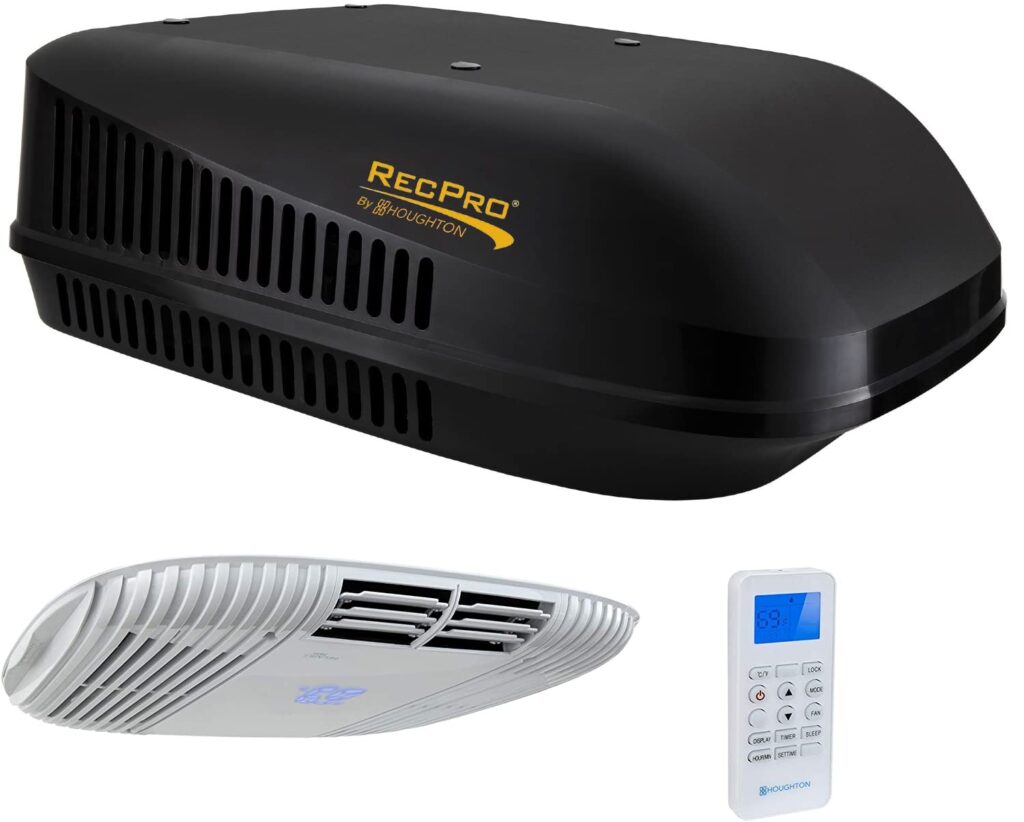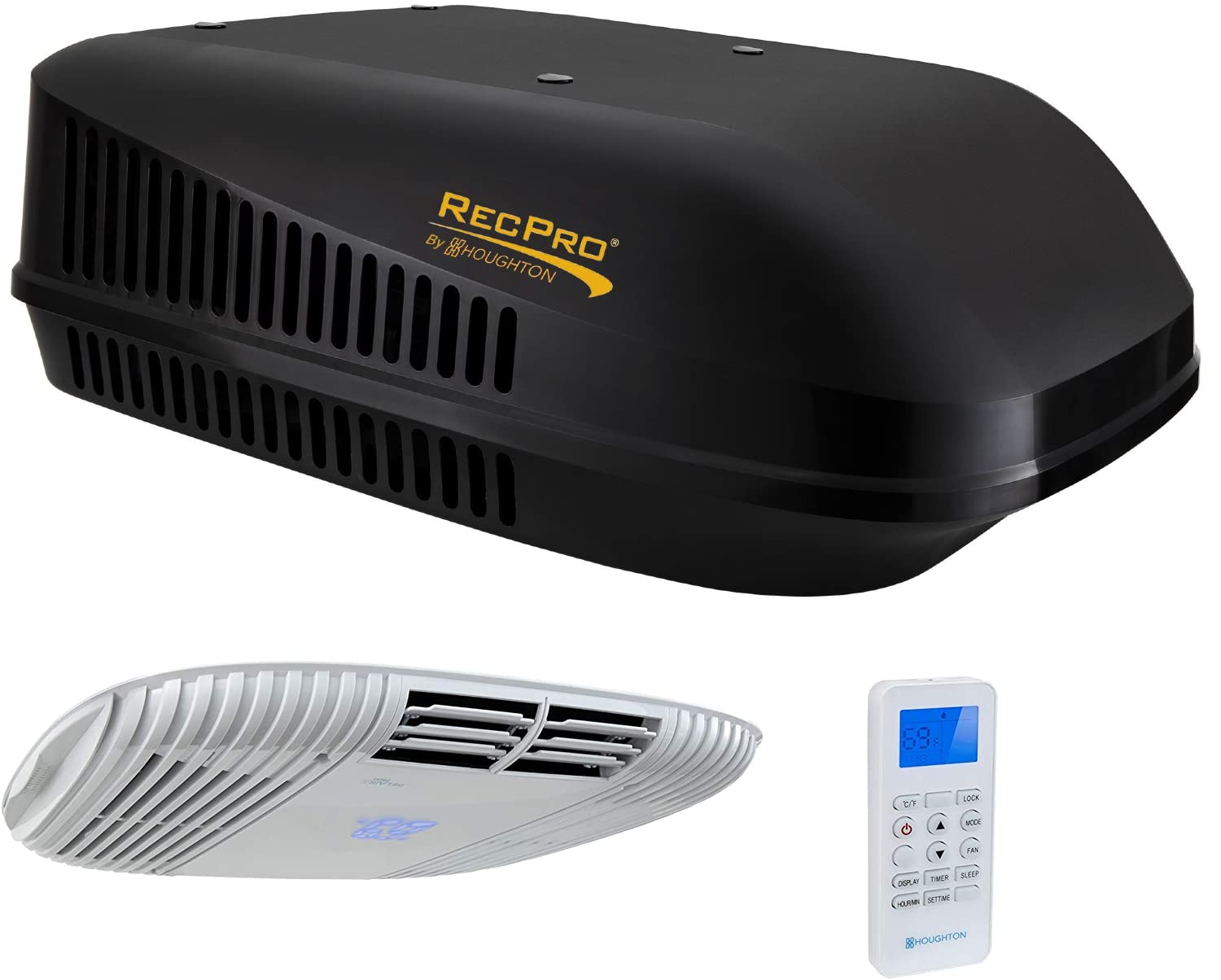
Staying Cool on the Road: Your Guide to the Best Portable AC Unit in a Camper
The open road beckons, promising adventure and the freedom to explore. But for many RV enthusiasts, the allure of travel can quickly fade when faced with the sweltering heat of summer. A comfortable camper experience often hinges on climate control, and that’s where a portable AC unit in a camper becomes an indispensable asset. This comprehensive guide will delve into everything you need to know about selecting, installing, and maintaining the perfect portable AC unit in a camper, ensuring your journeys are as comfortable as they are memorable.
Understanding the Need for Climate Control in Your Camper
Campers, by their very nature, are exposed to the elements. Without proper insulation and ventilation, they can quickly transform into ovens under the summer sun. This makes a reliable cooling system, like a portable AC unit in a camper, a necessity for comfortable living. But it’s not just about comfort; it’s about safety and well-being. Excessive heat can lead to dehydration, heatstroke, and sleep disruption, all of which can negatively impact your travel experience.
Furthermore, the ability to maintain a consistent temperature can protect your camper’s interior. High temperatures can damage electronics, warp wood, and accelerate the degradation of fabrics and upholstery. A portable AC unit in a camper helps to mitigate these risks, preserving the lifespan and value of your recreational vehicle.
Choosing the Right Portable AC Unit for Your Camper
The market offers a wide array of portable AC units in a camper, each with its own set of features and specifications. Making the right choice requires careful consideration of several factors:
- BTU Rating: British Thermal Units (BTUs) measure the cooling capacity of an AC unit. The higher the BTU rating, the more powerful the unit. The size of your camper is the primary determinant of the required BTU rating. A general rule of thumb is to calculate approximately 20 BTUs per square foot. For example, a 150-square-foot camper would ideally require an AC unit with a 3,000 BTU rating. However, consider factors like insulation, window size, and climate when making your final decision.
- Portability and Size: Portable AC units in a camper are designed to be mobile, but their portability varies. Consider the unit’s weight, dimensions, and ease of movement. Some models come with wheels and handles for easier maneuverability. Ensure the unit fits comfortably within your camper’s interior space and doesn’t obstruct movement or access to other features.
- Power Consumption: Campers often rely on limited power sources, such as shore power or generators. Assess the power consumption of the portable AC unit in a camper and ensure it aligns with your camper’s electrical capabilities. High-powered units may require a larger generator or a more robust electrical system.
- Features and Functions: Modern portable AC units in a camper often come with a range of features, including multiple fan speeds, sleep modes, timers, and remote controls. Consider which features are essential for your needs and preferences. Some units also include dehumidifying and heating functions, adding versatility to the unit.
- Noise Level: AC units can generate noise, which can be disruptive, especially in a confined space like a camper. Check the decibel (dB) rating of the unit and opt for a model that operates quietly, allowing for peaceful relaxation and sleep.
Installation and Setup of Your Portable AC Unit
The installation of a portable AC unit in a camper is generally straightforward, but proper setup is essential for optimal performance and efficiency. Follow these steps for a smooth and effective installation:
- Choose a Suitable Location: Select a flat, stable surface within your camper for the AC unit. Ensure there’s adequate space around the unit for air intake and exhaust. Avoid placing the unit near direct sunlight or heat sources.
- Ventilation: Portable AC units in a camper require proper ventilation to exhaust hot air outside. Most units come with window kits that include an exhaust hose and window adapter. Ensure the exhaust hose is securely connected to the unit and the window adapter, creating a tight seal to prevent air leakage.
- Power Connection: Plug the AC unit into a grounded power outlet that meets the unit’s voltage and amperage requirements. Avoid using extension cords unless absolutely necessary, and ensure the cord is rated for the unit’s power consumption.
- Testing and Operation: Once the unit is set up, turn it on and select your desired settings. Monitor the unit’s performance, ensuring it’s cooling the camper effectively and expelling hot air through the exhaust hose.
Maximizing Efficiency and Performance
To get the most out of your portable AC unit in a camper, follow these tips:
- Insulation: Ensure your camper is well-insulated to minimize heat gain. Seal any gaps or cracks around windows and doors to prevent air leakage.
- Window Coverings: Use window coverings, such as curtains or blinds, to block direct sunlight. This helps to reduce heat buildup inside the camper.
- Airflow: Maintain good airflow within the camper by opening interior doors and vents. This helps to distribute cooled air evenly.
- Maintenance: Regularly clean or replace the air filters to maintain optimal performance. Also, inspect the exhaust hose and window adapter for any leaks or damage.
- Proper Sizing: Make sure the BTU rating is appropriate for your camper’s size. An undersized unit will struggle to cool the space effectively, while an oversized unit may waste energy.
Comparing Portable AC Units with Other Cooling Solutions
While a portable AC unit in a camper offers a convenient and flexible cooling solution, it’s worth comparing it with other options:
- Roof-Mounted AC Units: These are permanently installed units that offer a more integrated cooling solution. They typically have higher BTU ratings and are more powerful than portable units. However, they require professional installation and are less flexible.
- Window AC Units: These units are designed to be installed in windows. They are generally more affordable than roof-mounted units but require a window opening and can obstruct the view.
- Evaporative Coolers (Swamp Coolers): These units use the process of evaporation to cool the air. They are more energy-efficient than AC units but are less effective in humid climates.
The best choice depends on your specific needs, budget, and camper setup. A portable AC unit in a camper is often the most practical solution for those who want flexibility and ease of installation.
Maintaining Your Portable AC Unit for Longevity
Regular maintenance is crucial to ensure your portable AC unit in a camper performs efficiently and lasts for years. Here’s a maintenance checklist:
- Clean the Air Filter: Regularly clean or replace the air filter, typically every few weeks or months, depending on usage and environmental conditions. A dirty filter restricts airflow and reduces cooling efficiency.
- Clean the Unit: Wipe down the exterior of the unit with a damp cloth to remove dust and debris.
- Check the Exhaust Hose: Inspect the exhaust hose for any leaks, kinks, or damage. Ensure it’s securely connected to the unit and the window adapter.
- Drain the Condensate: Some units have a condensate drain that needs to be emptied periodically. Refer to the unit’s manual for instructions.
- Storage: When not in use, store the portable AC unit in a camper in a clean, dry place. Cover the unit to protect it from dust and debris.
Troubleshooting Common Issues
Even with proper maintenance, you may encounter some issues with your portable AC unit in a camper. Here are some common problems and their solutions:
- Unit Doesn’t Turn On: Check the power cord and outlet. Ensure the unit is plugged in securely and that the outlet is functioning. Check the circuit breaker or fuse.
- Unit Doesn’t Cool: Clean or replace the air filter. Check for any obstructions blocking the air intake or exhaust. Ensure the exhaust hose is properly connected and sealed.
- Unit Leaks Water: Check the condensate drain and empty it if necessary. Ensure the unit is level.
- Unit Makes Excessive Noise: Check for any loose parts or obstructions. Ensure the unit is placed on a stable surface.
If you’re unable to resolve the issue, consult the unit’s manual or contact a qualified technician.
Making the Most of Your Camper with a Portable AC Unit
A portable AC unit in a camper is more than just a convenience; it’s an investment in your comfort and enjoyment of the RV lifestyle. By selecting the right unit, installing it correctly, and maintaining it properly, you can ensure that your camper remains a cool, comfortable, and inviting retreat, no matter the weather outside. Embrace the freedom of the open road, knowing that you have a reliable cooling system to keep you comfortable on every adventure. The right portable AC unit in a camper will transform your travel experience, allowing you to focus on creating lasting memories.
[See also: Related Article Titles]


